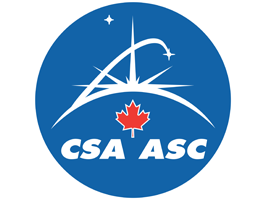G.O. Canada - Canadian Space Agency
Wildy is responsible to provide Building Operation and Maintenance services as well as Engineering Support to the CSA G.O. Canada Program.
Canadian Space Agency (CSA)
Purpose
The Canadian Space Agency (CSA) has the requirement to provide operations, maintenance, and engineering (OM&E) services to the ongoing Geospace Observatory (GO) Canada program.
In particular, the core sites contain crown-owned computer infrastructure and instruments that will be maintained by this contract.
G.O. Canada Initiative
The G.O. Canada program was originally known as the CANOPUS program, and then the Canadian GeoSpace Monitoring (CGSM) program.
It is motivated by the need for a greater fundamental understanding of the planetary environments that are affected by the short- and long term variability of our star – the Sun. The Sun and Earth form a tightly coupled system, with solar variability driving space weather and climate, the creation of harsh radiation environments, and the generation of the aurora.
The G.O. Canada program seeks to understand this fundamental solar-terrestrial coupling and its influence on our planetary environment.
Background
The GO Canada program is the direct successor of the CGSM program which succeeded to the CANOPUS program and builds on its world-class heritage.
- The CANOPUS program began in the early 1980s and is described in CANOPUS: Scientific Objectives and System Description, CANOPUS – A ground-based instrument array for remote sensing in the high latitude ionosphere during ISTP/GGS program, and CANOPUS-2000: A Proposal to the Canadian Space Agency.
- From 2003 to 2007, the CGSM instrument network was composed of the Canadian SuperDARN radars, the CADI digisonde array, the CANOPUS and CANMOS magnetometers, the CANOPUS Meridian Scanning Photometers (MSPs), the CANOPUS riometer array, the NORSTAR All Sky Imager (ASI) array, and the Solar Radio Monitoring Program (SRMP) 10.7 cm solar flux antenna.
This phase of the CGSM program was characterized by major deployments of new instrumentation and the hardware and software infrastructure required to manage the resulting data.
- The following phase (2008-2012) saw additional deployments to increasingly focus on activities that realize the full potential of the CGSM dataset. The scientific elements of CGSM that received funding for this new phase are enumerated below (see GO Canada Scientific elements).
- From December 2013 to November 2018, the Geospace Observatory (GO) Canada will support 10 scientific projects funded by the CSA. Some of those projects require the use of core sites and are listed in this document.

